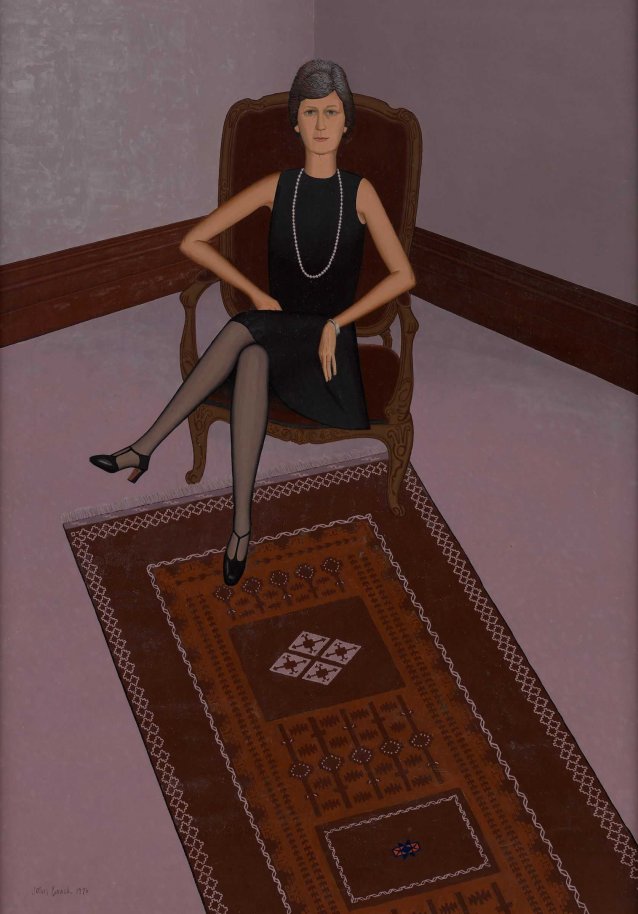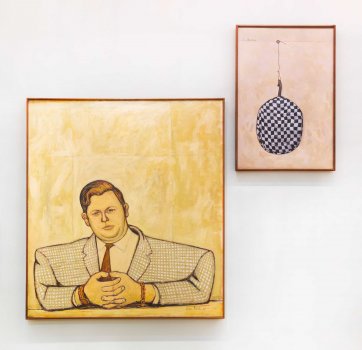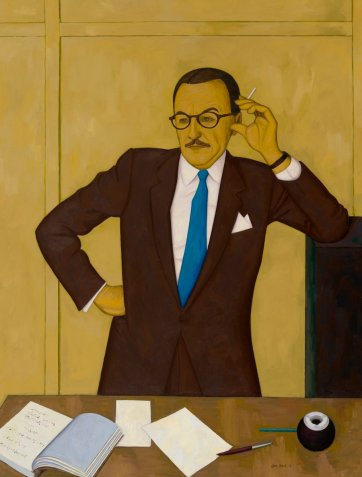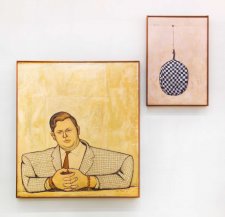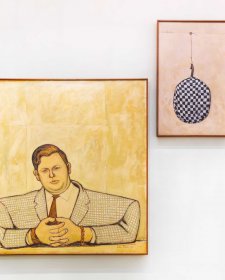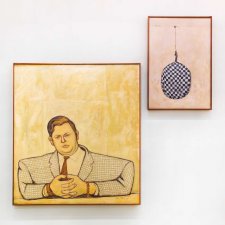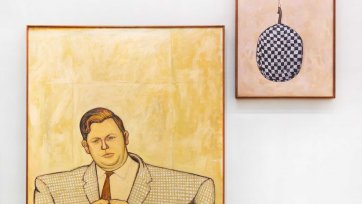Read
Kym Bonython, cattle breeder, musician, jazzographer, entrepreneur, racing car driver, art consultant, gallery owner, broadcaster and author, generously donated Portrait of Kym Bonython and Portrait of Mr Bonython’s speedway cap, both painted by John Brack, to the National Portrait Gallery. John Brack was an observer; he analysed what he saw and attempted to present it in an objective manner. Brack once commented, ‘My portraits are not simply a sort of photograph appearance of the subject. I call them cerebral paintings. I am interested in obtaining a synthesis which is a commentary on the subject and human conditions. The portrait is not just the subject but what he means in the past, the present and the future.’
Read the Portrait article Somewhere to Hang your Cap by Beatrice Thompson.
It is a curious fact that John Brack, once regarded as the archetypal Melbourne artist, has emerged in the last ten years as a truly national figure. In part this recent celebrity is due to his prominent place in the market – a factor of his limited production and the record prices achieved by the sales of his iconic paintings The Bar (1954) and The Old Time (1970) – which in 2007 became the highest-priced Australian work of art ever sold.
Read the Portrait article Head, Hand, Heart by Michael Desmond about an exhibition of John Brack portraits at the National Portrait Gallery.
Solo Activity
The construction of pose in portraiture includes the arrangement of the inanimate objects in relation to the body. In Brack’s portrait of Joan Croll, the sitter is painted from a different perspective to the rug, which appears tilted upwards.
You will need: A magazine or newspaper with pictures (you will be cutting it up so make sure its one that is on its way to the recycling!), scissors, a blank sheet of paper.
- In old magazines or newspapers find three images of people and cut them out
- Now find three pictures of landscapes or rooms taken from unusual perspectives – for example, an aerial view or a view looking upwards.
- Place your people in each new scene and as you mix and match reflect on how the impression of the person’s pose and presence alters.
Connected activity
Another portrait where pose is used to convey something about the person is Ian Thorpe, 2002 by James Houston. Thinking about the power of pose, and drawing inspiration from both portraits, this is a quick sketch activity about pose that you can try with a friend.
You will need: something to draw with (pencil, pen, marker, charcoal, etc.); something to draw on (paper); a device with video conferencing software.
- Video call a friend who you’d like to draw with.
- Ask them to position their device in such a way that it allows them to be in the video frame without needing to hold it.
- Divide your paper into fours by folding or marking it.
- Get your friend to strike a dynamic pose and hold it for 30 seconds.
- Draw the pose they have created in one of the quadrants on your piece of paper. You only have 30 seconds to capture the pose, so use a very simplified style. Stick figures or similar are fine.
- Repeat steps 4 and 5 until you have a different pose in each section of your page
- Switch roles with your friend and perform steps 2 through 6 with you as the model and them as the artist.
- Review your sketches and consider the lines you’ve chosen to include, how they fill the page, and the negative space around the figure. What does each pose communicate about the figure? Compare notes with your drawing partner. Remember: this activity is not about making perfect illustrations, it’s about exploring the importance of pose to a portrait.
